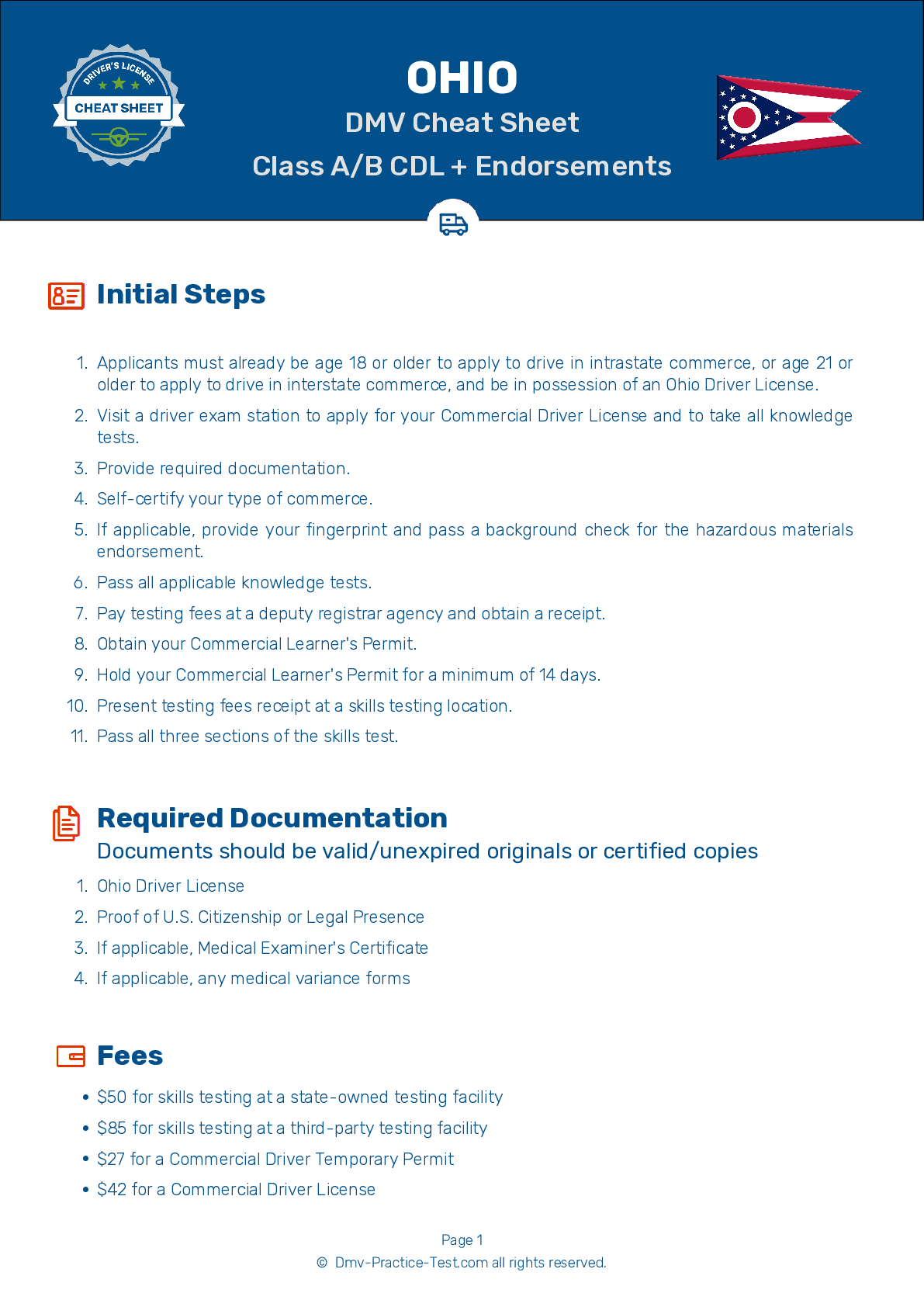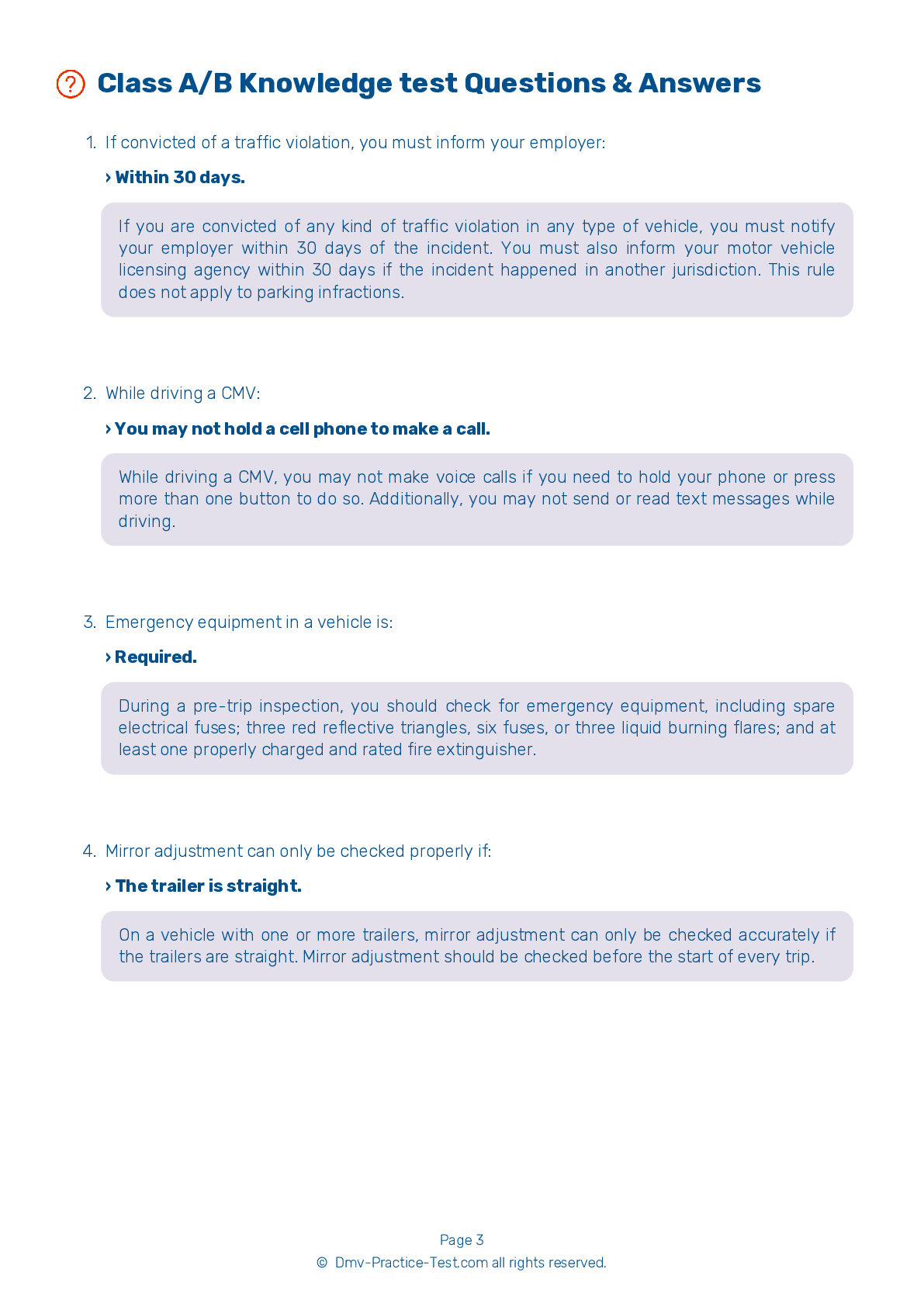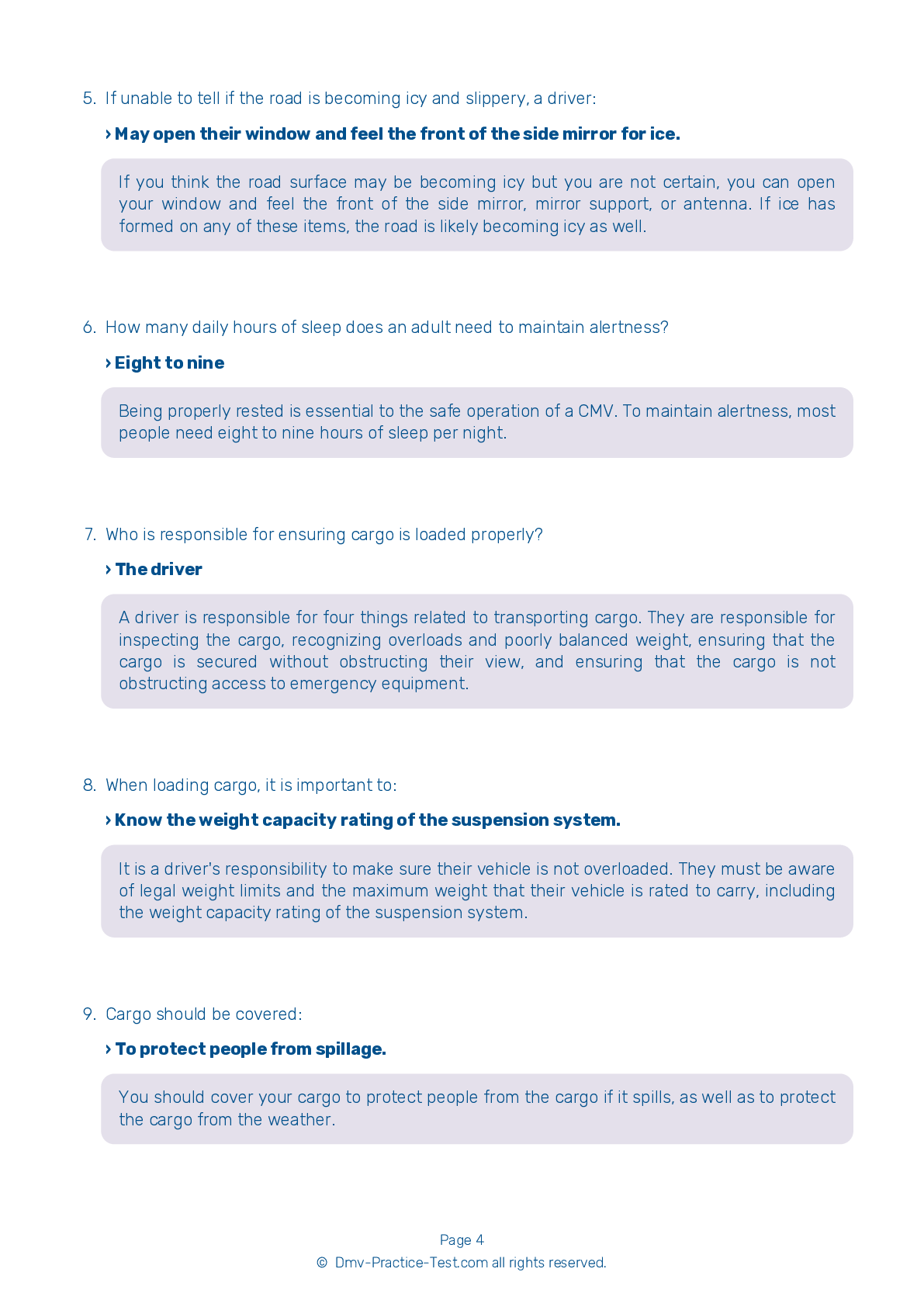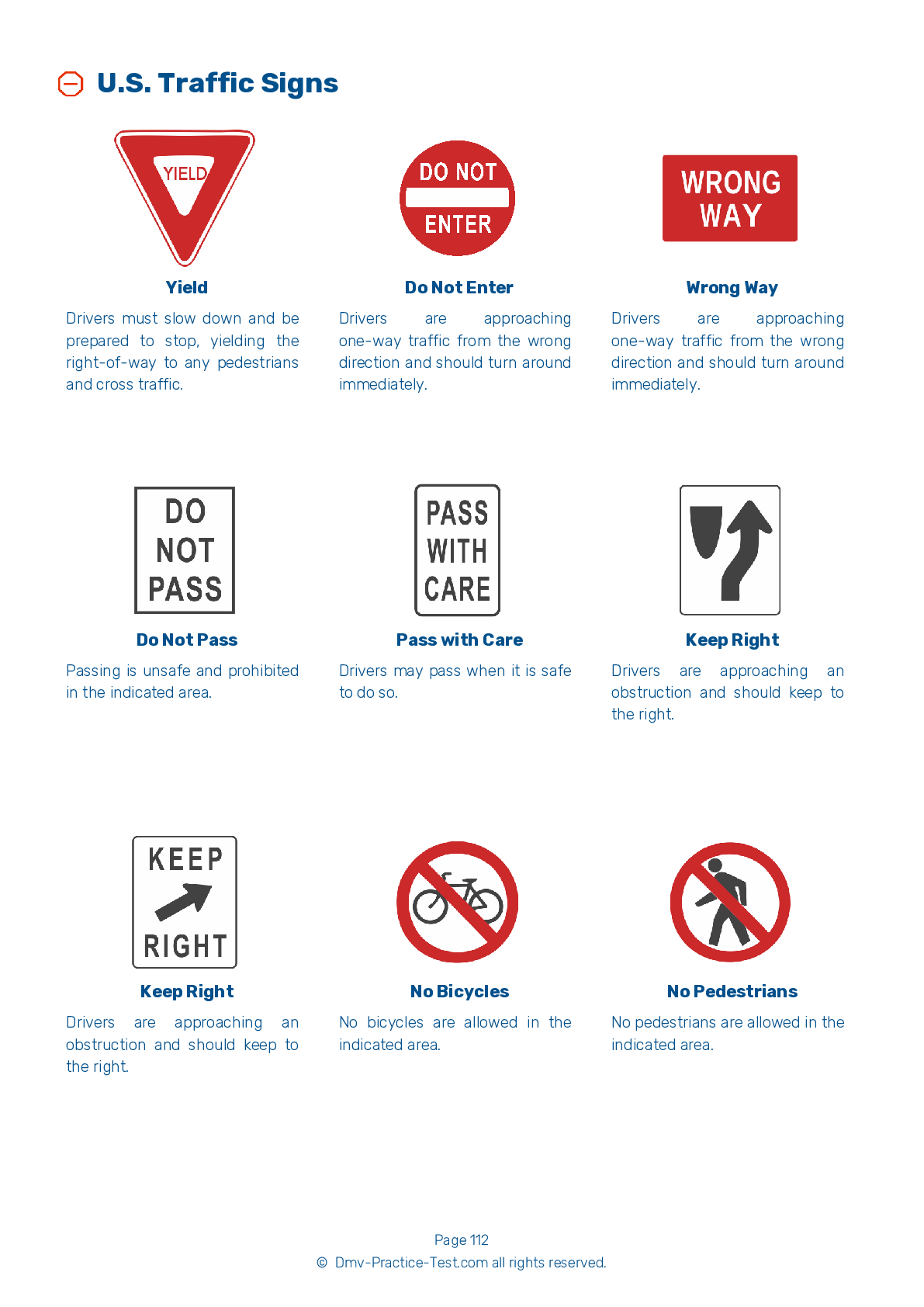HazMat #1
Hazmat Test | Ohio 2025 #1 Page 5 of 5
On our website, we provide FREE practice - CDL hazmat test online! The official exam test consists of several obligatory parts, with all of them checking your knowledge of different blocks of road rules. If you need to obtain a OH CDL hazmat endorsement in 2025, practice as much as possible. Free sample tests published on our website will help you check and improve your knowledge and boost your grades. Please bear in mind that Ohio requirements for issuing a hazmat endorsement for CDL may vary from those established in other states.
30
24
20
25 . The power unit of a placarded vehicle must carry a fire extinguisher with a minimum rating of:
The power unit of a placarded vehicle must be equipped with a fire extinguisher with an Underwriters Laboratories (UL) rating of 10 B:C or more.
26 . If you are transporting hazardous materials and the cargo is on fire, you should:
Fighting a hazardous materials fire requires special training and protective gear. Unless you have the proper equipment and training, do not try to fight a hazardous materials fire yourself.
27 . If loading corrosive materials, you should not:
If loading by hand, load breakable containers of corrosive liquid one by one. Keep them facing upright. Do not drop or roll the containers.
28 . How often are hazardous materials employees required to be trained and tested?
All drivers must be trained in the security risks of hazardous materials transportation. This training must include how to recognize and respond to possible security threats. Hazardous materials employees must be trained and tested at least once every three years.
29 . A driver should ensure that:
It is always a good idea to compare package markings and labels to accompanying shipping papers. Always make sure the shipper has displayed the correct basic description on the shipping paper and has provided the proper labels on the packages.
30 . A person attending a placarded vehicle must be:
A person attending a placarded vehicle must be awake inside the vehicle or otherwise within 100 feet of the vehicle; know the hazards associated with the materials; know what to do in an emergency; and be able and authorized to move the tank if necessary.
2025 Ohio | Frequently Asked Questions
To acquire a CDL Hazmat endorsement in Ohio, first, you must hold a valid Ohio CDL. Then, pass the Hazmat knowledge test at your local BMV. You'll also need to undergo a TSA background check. Lastly, submit your application with the appropriate fees to the Ohio Bureau of Motor Vehicles (BMV). The endorsement will be added upon approval.
To obtain a CDL Hazmat license, you must have a valid Commercial Driver's License (CDL). You also need to pass the Hazardous Materials Endorsement Knowledge Test. A Transportation Security Administration (TSA) background check is required. Lastly, you must be at least 21 years old and be able to read and speak English adequately.
When applying for a CDL Hazmat endorsement in Ohio, you'll need your current Ohio CDL. You should also have proof of U.S. citizenship or legal status, such as a birth certificate, passport, or immigration documents. Additionally, you'll need to provide your Social Security number and complete a TSA security threat assessment application, which includes fingerprinting and a background check.
Yes, there is a dedicated written test for the CDL Hazmat endorsement. The Hazardous Materials Endorsement Knowledge Test is designed to evaluate your understanding of the rules and regulations of transporting hazardous materials. It covers topics such as loading and unloading, bulk packaging marking, driving and parking rules, and emergency response procedures.
The written test for the CDL Hazmat endorsement covers a variety of subjects related to hazardous materials. These include identifying different types of hazardous materials, understanding shipping papers, placarding rules, loading and unloading procedures, driving and parking rules, emergency response procedures, and how to handle hazardous materials safely and effectively.
Yes, there are additional charges associated with acquiring a CDL Hazmat endorsement in Ohio. These include fees for the knowledge test, endorsement application, fingerprinting, and background check. The exact amount may vary, so it's advised to check with the Ohio Bureau of Motor Vehicles or a local DMV office for current rates.
Yes, obtaining a CDL Hazmat endorsement requires a background check and security clearance. This is mandated by the Transportation Security Administration (TSA). The process includes fingerprinting and a check of criminal, immigration, and mental health records. The goal is to ensure that hazardous materials are transported safely and securely.
Yes, specialized training and certification are mandatory for a CDL Hazmat endorsement in Ohio. Applicants must pass a written knowledge test that covers hazardous materials regulations and safety procedures. Once you pass the test, the endorsement is added to your Commercial Driver's License. This ensures you are equipped with the necessary knowledge to handle hazardous materials.
No, you cannot legally transport hazardous materials without a valid CDL Hazmat endorsement in Ohio. The endorsement is required to ensure the driver understands the safety procedures and regulations related to transporting hazardous materials. Violating this can result in hefty fines, suspension of your CDL, or even imprisonment.
You can add a CDL Hazmat endorsement to your current CDL license without needing a new application. However, you must pass the Hazmat knowledge test and undergo a TSA background check. Once cleared, the Hazmat endorsement will be added to your existing CDL. Remember, your CDL must be valid and in good standing for this process.



